He hasn’t had a Top 40 hit in a decade, but don’t let that fool you — as a producer, songwriter, performer, and entrepreneur, Kenneth “Babyface” Edmonds is one of the most influential artists of the last 25 years. One of the primary architects of New Jack Swing, he helped bridge the commercial gap between pop and R&B in the ’80s, using a radio-friendly sheen to erase the line between black and white playlists once and for all. It was Michael Jackson who broke the color divide at a broader cultural level, but if you listen to Top 40 radio today, it’s echoes of Babyface you’ll hear — mechanized production melded with ruthless hooks. Everything from Lil Wayne’s “How to Love” to OneRepublic’s “Good Life” owes some sort of debt to the Edmonds oeuvre.
Babyface got his start as a solo artist with 1987’s Lovers, and that’s where we’re picking up his Popdose Guide, but if you want to know more, these albums are really just the starting point for a discography that spills over into everything from the Deele — the band where he scored his first hits with drummer and future business partner L.A. Reid — to a list of artists that includes After 7, TLC, Toni Braxton, Pebbles, and more. For now, just sit down next to this crackling fire, let us pour you a glass of wine, and get comfortable with the Popdose Guide to Babyface.
 Lovers (1987)
Lovers (1987)
Someone somewhere picked Babyface to be the breakout star of the Deele, and this solo album was recorded and released before the band split up. Actually, it was recorded and released a year before the band scored pop success with the top-ten hit ”Two Occasions.” The elements that eventually made Babyface ”Babyface” were already there — primarily, solid lyrics that catered (some might say kissed the ass of) a female fan base. With songs like ”Chivalry,” he opened the door that artists like Ralph Tresvant would walk through just a couple years later. ”I Love You Babe” was a top-ten R&B hit, but this album is largely forgotten when Face’s discography is discussed. Still, Lovers is worth checking out — there’s a very nice cover of the Stylistics’ ”You Make Me Feel Brand New,” an adult update of the children’s tune ”Mary Mack,” and the title track, which just might be the most sensitive song about deflowering a young lady that’s ever been recorded. —Mike Heyliger [kml_flashembed movie="http://www.youtube.com/v/I5aeE_qR4wk" width="600" height="344" allowfullscreen="true" fvars="fs=1" /]
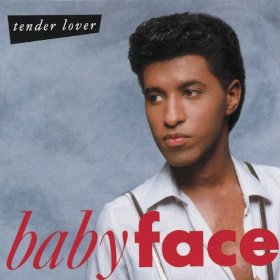 Tender Lover (1989)
Tender Lover (1989)
Damn. Listen, if you don’t remember ’89-’90, this is going to be a little difficult to explain, but trust me — Babyface was everywhere during this period. During the New Jack Swing explosion, he and L.A. Reid were responsible for what seemed like every other hit song — and ‘Face, who had a recording career to go with his busy songwriting and production portfolio, was particularly inescapable. Tender Lover was the album that more or less kicked off the Babyface Era; to listen to it is to hear the essence of Top 40 between, say, the spring of ’89 and early ’91. The eminently danceable, machine-driven beats, the busily arranged piles of synths, the constant cries of “whoo!” — it’s all here. And while Tender Lover isn’t a perfect record — it’s overly ballad-heavy, the material is about as uneven as you’d expect from a guy who was spread as thin as Babyface, and the cheap-looking cover screams “Olan Mills” — it contains a handful of ‘Face classics, including “My Kinda Girl,” “It’s No Crime,” and the timeless booty-calling classic “Whip Appeal.” (The Tender Lover reissue includes a 12-inch version of “Whip.” Damn.) –Jeff Giles
[kml_flashembed movie="http://www.youtube.com/v/fh5ejGUTGAo" width="600" height="344" allowfullscreen="true" fvars="fs=1" /]
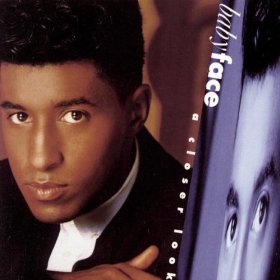 A Closer Look (1991)
A Closer Look (1991)
Everyone else was releasing remix records, so why not Babyface? Actually, as these things go, A Closer Look really isn’t bad — it bundles together some of the best bits from Lovers and Tender Lover, gives them a fresh coat of paint, and adds a Deele classic (“Two Occasions,” presented here in a laughable “live version”) and a pair of hit duets with other artists (“Love Saw It,” with Karyn White, and “Love Makes Things Happen,” with the onetime R&B star/Mrs. L.A. Reid known as Pebbles). As you’d expect, nothing here is truly essential, which probably has a lot to do with why A Closer Look is out of print — that, and the fact that Epic’s later Babyface reissues tacked on their own remixes, rendering this set irrelevant. Still, for kids who didn’t want to spring for both Babyface records in 1991 — or who wanted to hear an extended version of “My Kinda Girl” — it made for a worthwhile purchase. –JG
[kml_flashembed movie="http://www.youtube.com/v/w9Np8oTn0D8" width="600" height="344" allowfullscreen="true" fvars="fs=1" /]
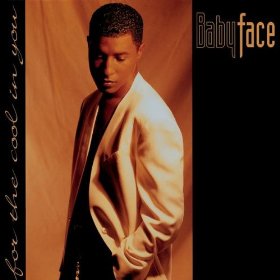 For the Cool in You (1993)
For the Cool in You (1993)
Having secured success as an artist with Tender Lover, Face dulled whatever rough edges he had with the follow-up, which was nearly four years in the making. Any sense of funk disappeared from Babyface’s repertoire, leaving a solid if occasionally bland collection of midtempo and slow jams. Even though a handful of songs are almost completely indistinguishable from one another, others hold up fairly well. The jazzy title track is a winner, as is the pleading ballad ”Never Keeping Secrets.” The change-of-pace acoustic ballad ”When Can I See You” (on which Babyface is a vocal dead ringer for Tracy Chapman) became his highest-charting single to date, placing in the top five on the pop charts and pushing For the Cool in You to sales of three million. It’s also worth noting that the seeds were sown for his 2007 collection of soft-rock covers with this album’s (dreadful) cover of the Billy Preston-composed, Joe Cocker-performed ”You Are So Beautiful.” –MH
[kml_flashembed movie="http://www.youtube.com/v/oh4lLo90Ha4" width="600" height="344" allowfullscreen="true" fvars="fs=1" /]
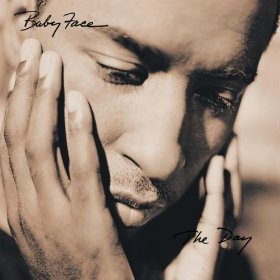 The Day (1996)
The Day (1996)
In the midst of his run as the most popular songwriter/producer in pop music, Babyface decided to call in some favors. The Day features a who’s who of modern pop and R&B circa 1996: Eric Clapton, Stevie Wonder, members of Boyz II Men, Mariah Carey, and Kenny G all appear, and he even reunites the most popular incarnation of Shalamar for a cover of their 1981 hit ”This Is for the Lover in You” (which also crams in a rap appearance by LL Cool J). This occasionally results in the main artist getting lost in his own album — Babyface doesn’t have a strong enough personality as an artist to cut through all of the other people stepping into his path. There’s also the sense that, by this point, Babyface was virtually on autopilot. After almost a decade of penning hits for himself and others, he sounds bored on most of this album. Aside from the wistful ”Simple Days” and the elegant ”Seven Seas,” the best moments on The Day belong to others — Wonder’s impassioned vocal on the anti-domestic-violence anthem ”How Come, How Long,” Mariah’s pretty vocal arrangement on ”Every Time I Close My Eyes,” and Howard Hewett’s arrival three-quarters of the way through ”This Is for the Lover in You.” While The Day was a sales success, it was the last album on Face’s Epic Records contract, and he soon took off and joined L.A. Reid on Arista. –MH
[kml_flashembed movie="http://www.youtube.com/v/R0QtanYBHA0" width="600" height="344" allowfullscreen="true" fvars="fs=1" /]
 MTV Unplugged in NYC (1997)
MTV Unplugged in NYC (1997)
Generally speaking, the “unplugged” fad was mainly a white phenomenon — partly as a matter of course, because a lot of the hip-hop and R&B acts of the era were studio constructs that would have dissolved in an acoustic setting, but partly because MTV still had more of a vested interest in guitar bands. All of which is a roundabout way of saying that it seems churlish to complain about a record like Babyface’s MTV Unplugged in NYC, because at least it wasn’t Clapton or Rod Stewart. On the other hand, Babyface in 1997 wasn’t too far removed from either of those guys — in fact, Unplugged in NYC leads off with a seven-and-a-half-minute version of ‘Face’s hit collaboration with Clapton, “Change the World,” and moseys slowly downhill from there. He frustratingly ignores most of his early hits, and lards the set list with things no one ever wanted to hear, like Shanice covering “Breathe Again.” The absolute nadir is the “unplugged” version of “The Day (That You Gave Me a Son),” eight minutes of Babyface at his most simperingly mawkish. One to avoid. —JG
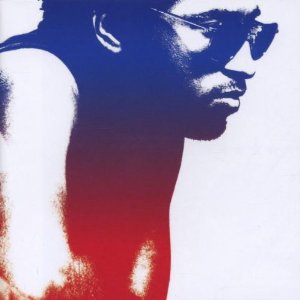 Face2Face (2001)
Face2Face (2001)
After a five-year break between studio albums, Babyface decided to get back onto the horse, and he brought some new stallions with him. While the addition of the Neptunes as collaborators might have seemed wildly incongruous, it wasn’t a bad move — ‘Face (sporting a new, Kravitz-esque hairdo) actually sounded rejuvenated on some of these tracks. First single ”There She Goes” finds Face adopting a sort of Curtis Mayfield/Michael Jackson fusion (with the help of the ubiquitous Pharrell Williams on vocals), and it kinda works. He was also smart enough to not totally throw the baby out with the bath water: ”What If” sounds like a classic Babyface ballad of old, just with a harder percussion track. That said, it’s still pretty wrong to hear Babyface, previously the epitome of class, singing a song like ”Baby Mama” assisted by Snoop Dogg. Truthfully, Face2Face could’ve given Face the career resuscitation he was looking for with the label change and new collaborators … had it not been released on September 11, 2001. –MH
[kml_flashembed movie="http://www.youtube.com/v/nSN-aBuCMGw" width="600" height="344" allowfullscreen="true" fvars="fs=1" /]
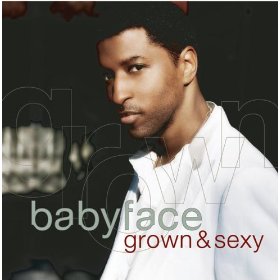 Grown & Sexy (2005)
Grown & Sexy (2005)
Fifteen years after he helped define the sound of modern R&B, Babyface threw up his hands and resorted to openly chasing trends. It’s hard to blame him — Grown & Sexy sat in label limbo for a year, as good a signal as any that his time as a relevant artist was up — but it’s still pretty depressing to start listening to a Babyface album and hear Auto-Tune right out of the gate. In spite of that — and its awful, awful title — Grown isn’t ‘Face’s worst album by a long shot. He keeps things light and limber for tracks like “Mad Sexy Cool,” and “Can’t Stop Now” represents the crispest blend of digital beats and analog warmth on a Babyface record since the early ’90s. Getting older is hell for an R&B artist, but Grown & Sexy is a surprisingly artful example of how to do it well — it cops to current sounds without utterly abandoning Babyface’s core strengths. At 13 tracks it’s too long, but at least it sounds like he’s trying — something we can’t take for granted in the post-The Day era. Sadly, it was his second consecutive studio set to sell fewer than 300,000 units. Worse, none of the album’s three singles cracked the R&B Top 40. –JG
[kml_flashembed movie="http://www.youtube.com/v/W3DmD1jdWfI" width="600" height="344" allowfullscreen="true" fvars="fs=1" /]
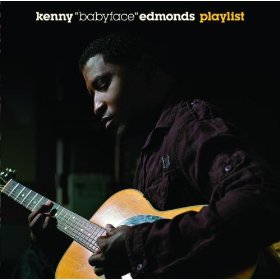 Playlist (2007)
Playlist (2007)
Signing to the newly reactivated Mercury Records (again, following his old partner L.A. Reid), Face did yet another 180 and decided to record an album of soft-rock classics from the ’70s and ’80s. If you had read that sentence in 1991, you’d probably have laughed yourself into hysterics. As Babyface got further along in his career, though, hearing him cover the likes of Dan Fogelberg and James Taylor didn’t seem like such a stretch. The issue with Playlist is the same issue I generally have with covers albums — there’s not much that can be done to draw attention away from the originals, which results in an album that’s essentially Babyface Sings Karaoke. He turns in faithful versions of all these songs, and a rendition of Dave Loggins’s ”Please Come to Boston” (with assistance from Brandy) is particularly enjoyable, but why even bother with this album if you have the originals? The two ‘Face originals on Playlist are a mixed bag: ”The Soldier Song” proves he has no place near an even vaguely political lyric, but ”Not Going Nowhere” is a well-written song that any father who has kids and has been through a divorce or separation can relate to. –MH
[kml_flashembed movie="http://www.youtube.com/v/_7oco_T7JrU" width="600" height="344" allowfullscreen="true" fvars="fs=1" /]






Comments